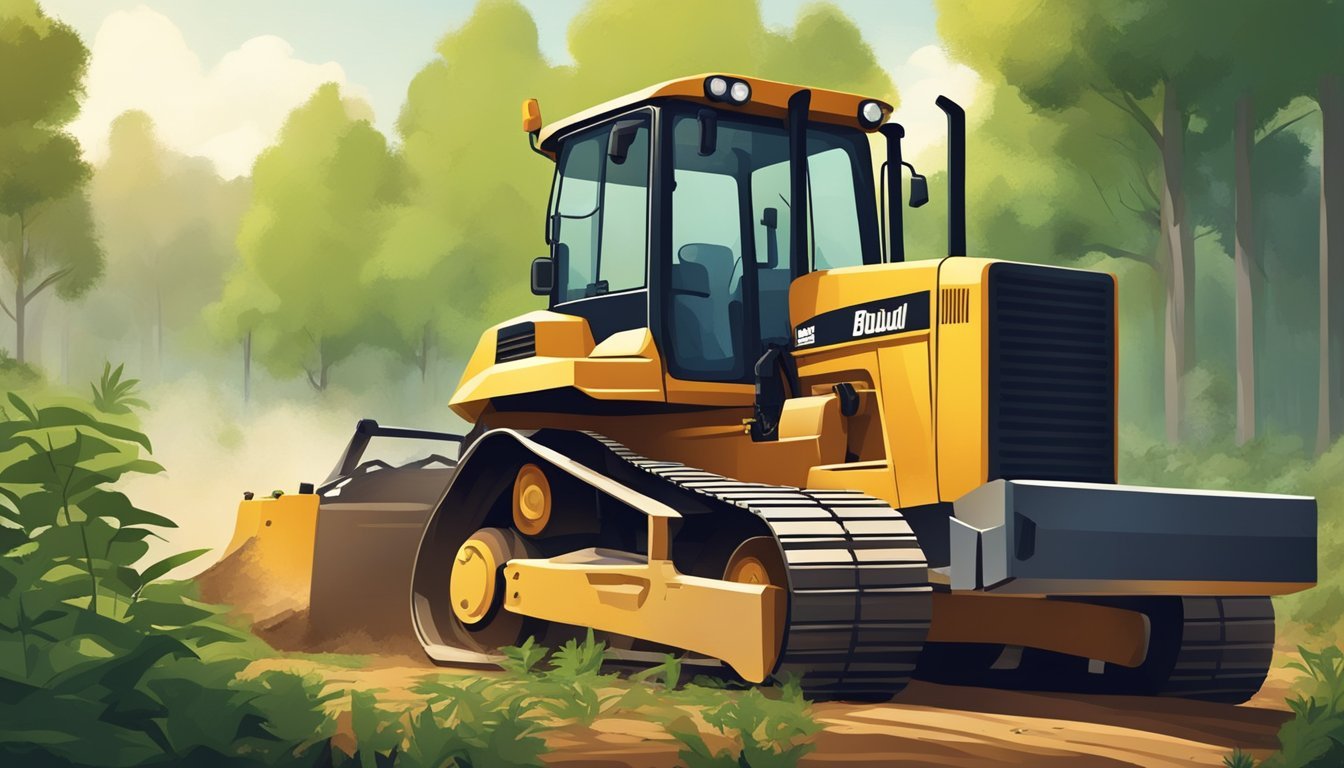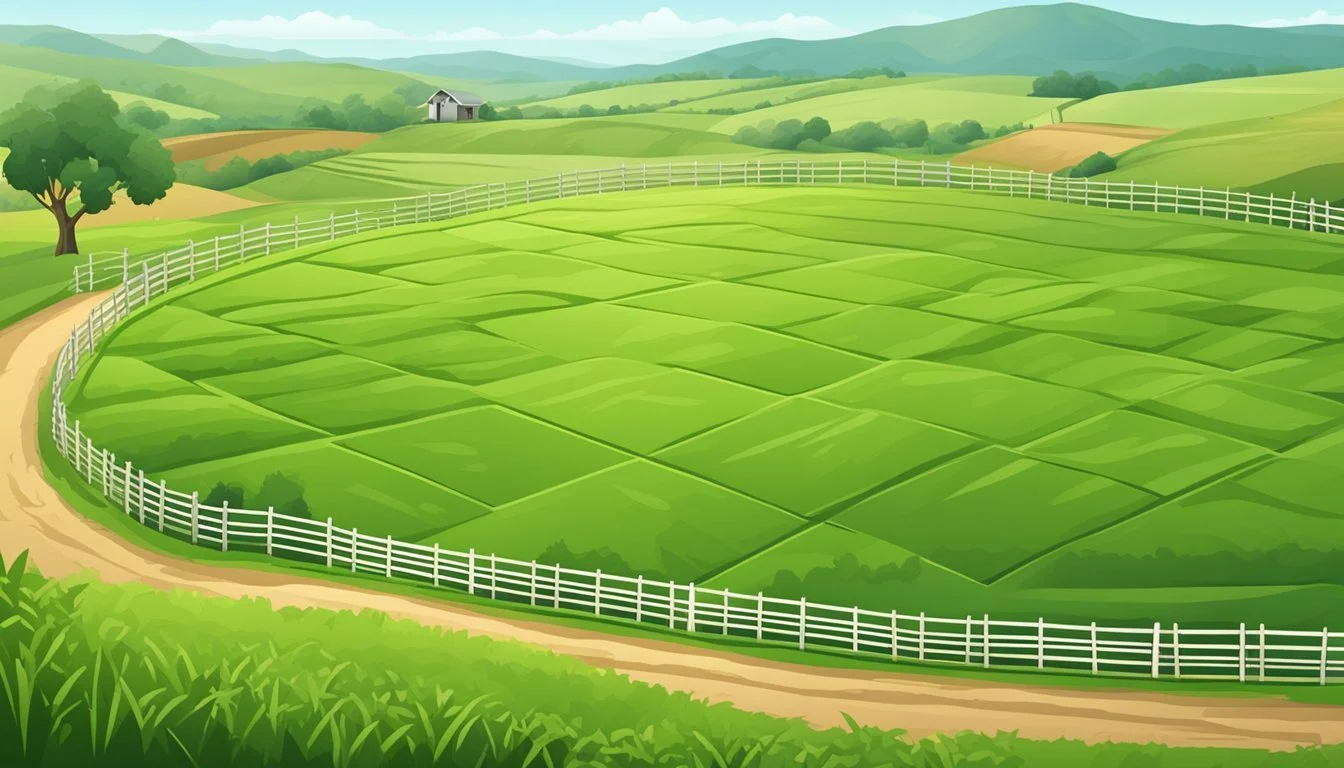Prepping Your Ranch
Essential Land Clearing Strategies for Cattle and Crop Management
Preparing land for agricultural production or livestock grazing is a crucial step for ranchers looking to optimize the utility and productivity of their land. The process of land clearing involves the removal of trees, brush cover, and other flammable debris to create open space for pastures or garden beds. This clearing not only readies the land for spring planting or cattle grazing but also helps in mitigating the effects of climate change by reducing excess forest floor cover, which can become hazardous during dry weather conditions. Ranchers must consider their region's climate, as certain techniques may vary in effectiveness; for example, cold climates may require unique approaches to clearing and preparing the ground for garden space or pasture.
For those embarking on the transformation of rugged terrain into fertile farm land, it is essential to understand the range of methods available—from manual removal of debris to the use of heavy equipment for more extensive operations. Implementing cover crops can enhance soil health, contributing to the long-term sustainability of agricultural operations. In addition, the integration of practices like rotational grazing can support both livestock and dairy production, ensuring that the newly cleared land continues to contribute positively to farm income. Engaging with institutions such as the Farm Service Agency or the Natural Resources Conservation Service can provide ranchers with financial assistance and advice on best practices for land clearning and improvements, aligning their efforts with current conservation standards and enhancing the potential of their agricultural lands.
Developing a Clearing Plan
Creating a plan to clear land for cattle or crops involves careful consideration of the land's characteristics, financial planning, and compliance with legal standards. This plan serves as a road map to transform the landscape into productive agricultural land.
Assessment of Land and Soil Quality
Before removing any vegetation or making alterations, it is crucial to thoroughly assess the land's topography, soil quality, and existing plant life. Soil testing is an indispensable step, as it reveals soil composition, nutrient levels, and pH balance—critical information for future agricultural production. Results will dictate the need for amendments to improve soil health or adjust pH levels, ensuring a robust foundation for crops or pasture.
Soil composition: Analyze for organic matter content and texture.
pH levels: Determine if soil is too acidic and requires lime to optimize conditions for agricultural operations.
Budget and Resource Allocation
Preparation for clearing land should include a detailed financial plan. This encompasses initial costs, such as contracting services or renting equipment, and ongoing expenses like soil amendments and maintenance. Allocating resources effectively is key to maximizing farm income while minimizing costs.
Estimate costs: Evaluate expenses for conventional clearing, tools, and permitted burning of flammable debris.
Financial assistance: Investigate if agencies such as the Natural Resources Conservation Service offer programs that provide aid for land improvements.
Legal Requirements and Permits
Clearing land is often subject to zoning laws and may require various permits. Research local regulations to ensure compliance with environmental standards, especially those that protect natural resources. Failure to obtain necessary permits can result in costly fines or legal challenges, which have the potential to impede clearing operations.
Zoning and environmental regulations: Check with local real estate and zoning offices for specifics regarding the clearing of land.
Permits: Secure all required permissions from local authorities to legally carry out land clearing and potential agricultural burning.
Selection and Preparation of Land
When establishing a ranch for cattle or crops, the selection and preparation of land are pivotal. The choice of land will impact the success of agricultural operations both in terms of livestock production and crop yield.
Identifying Areas for Cattle and Crops
Selecting the right areas for cattle and crops involves assessing the terrain and existing vegetation. For cattle, land should offer ample space for rotational grazing, which benefits both livestock and soil health. The presence of trees can provide shelter for cattle, but areas with excessive brush cover or flammable debris will require clearing to ensure safety and to optimize grazing areas. For crop production, land with a gentle slope is desirable to facilitate drainage and minimize soil erosion, potentially affecting farm income.
Livestock area considerations:
Shelter from weather extremes
Sufficient space for rotational grazing
Minimal brush cover and hazardous materials
Crop area considerations:
Adequate sunlight exposure
Low risk of standing water
Garden layout conducive to efficient planting and harvest
Soil Testing and Enhancement
Soil testing is crucial for both pasture lands and garden beds to determine nutrient levels and identify the need for fertilizer or soil amendments. The presence of organic matter is indicative of fertile soil, which can be further enhanced by integrating cover crops to improve agricultural production. Enhancing soil health is also a form of climate change mitigation, as healthy soils store more carbon.
Key parameters to test:
pH levels - to address acidic soils
Nutrient profile - to inform fertilizer application
Organic matter content - to gauge fertility
Water Resources Management
Effective water resources management ensures that livestock have access to clean water, and crops receive adequate irrigation. The presence of natural water resources, like streams or ponds, can be an asset, but their availability may change due to effects of climate change or seasonal weather patterns. Installing irrigation systems and planning for proper drainage are essential for sustained agricultural operations.
Water considerations for agricultural land:
Regular, clean water supply for cattle
Reliable irrigation systems for crops
Efficient drainage to prevent waterlogging
By adhering to these specific and targeted land selection and preparation practices, ranchers can enhance their agricultural lands' resilience and productivity, securing farm income and contributing to the sustainability of their agricultural operations.
Equipment and Techniques for Land Clearing
Successful land clearing for ranching requires selecting the right equipment and methods. Efficiency and effectiveness in removing vegetation, trees, and obstacles hinge on this careful choice.
Mechanical Clearing Methods
Bulldozers are often the go-to machines for large-scale land clearing. They are equipped with a wide front blade capable of clearing large areas and pushing aside debris. For rough and uneven terrain, crawler bulldozers are best suited, able to handle the challenging landscapes with ease.
Tractors come into play for a variety of tasks, commonly fitted with attachments like brush mowers that swiftly cut through dense brush. They can also tow heavy equipment needed for land preparation.
Stump grinders focus on removing tree stumps, turning them into wood chips or mulch, which can then contribute to soil health if managed correctly. This avoids the need for burning or using chemicals for stump removal.
Equipment for Mechanical Clearing:
Bulldozers
Tractors with attachments
Stump Grinders
Natural Clearing Practices
Mulching, which involves chipping trees and brush into mulch, can be achieved with specific equipment. This mulch is instrumental in soil conditioning, improving soil structure and fertility for future crop or pasture establishment. Deploying livestock, such as goats, can be a biological approach to clearing land, as they feed on brush and undergrowth.
Tools and Techniques for Natural Clearing:
Mulching Machines
Employing grazing animals
Managing Debris and Waste
After mechanical or natural clearing, managing the resulting waste is critical. Debris can be turned into compost, providing a useful resource for soil amendment. Larger pieces of waste, unsuitable for composting, such as large branches, can be collected and removed or repurposed for other uses.
Organized and environmentally conscious handling of waste not only contributes to the sustainability of the ranch but also to the health of the ecosystem on and around it.
Waste Management Strategies:
Turning waste into compost
Repurposing or responsible disposal of large debris
Establishing Pasture and Crop Areas
In transforming ranch land for successful agricultural production, special attention must be paid to the strategic establishment of pasture and crop areas. This involves selecting appropriate planting strategies and creating grazing systems designed for sustainability.
Planting Strategies for Crops
For optimal agricultural operations, planting crops requires careful consideration of soil health and garden layout. Utilize cover crops to enhance organic matter and protect agricultural lands from erosion, a critical move for combating the effects of climate change. When planning for agricultural production, secure financial assistance from entities like the Farm Service Agency to implement farm land improvements that boost farm income. Start by testing soil and amending it as needed to create garden beds ready for spring planting.
Key Considerations for Crop Planting:
Use rotational planting methods to maintain soil nutrients.
Incorporate organic matter to improve soil structure and fertility.
Plan the garden space to maximize sunlight exposure and adapt to weather patterns.
Consider climate change mitigation by selecting crops resilient to altered weather conditions.
Creating Sustainable Grazing Systems
For pasture areas, the integration of rotational grazing systems can enhance grassland health and support livestock production, including dairy operations. This approach allows time for pastures to recover, promoting better forage and reducing the need for supplemental feed. Clearing of brush and forest floor cover may be necessary, but efforts should focus on preserving soil structure and minimizing the risk of flammable debris accumulation. Partnering with the Natural Resources Conservation Service can provide guidance on sustainable grazing practices and potential funding for grazing livestock systems.
Grazing System Essentials:
Establish a fence layout that allows for effective rotational grazing.
Manage brush cover to reduce the presence of hazardous materials and pests.
Plan for the impacts of cold climate and winter weather, ensuring hardy grassland varieties.
Incorporate a wide range of grass species to support soil health and provide balanced nutrition for grazing animals.
When establishing pasture and crop areas, a holistic approach that considers long-term soil health, climate conditions, and financial feasibility will lead to a thriving ranch ecosystem.
Maintaining Your Ranch for Productivity and Health
Effective ranch maintenance combines strategic land management with careful monitoring of soil conditions and astute infrastructure management. This ensures sustainable livestock and crop production, which contributes to a healthier environment and stable farm income.
Ongoing Land and Animal Management
To maintain a productive ranch, regular management of both land and livestock is critical. Implementing rotational grazing helps preserve grasslands, preventing overgrazing and promoting regrowth. This technique also enhances soil fertility and structure. Monitor livestock health closely for any signs of disease or distress, ensuring timely interventions. Clearing land of flammable debris and brush cover reduces the risk of fire and creates a safer environment for both cattle and crops.
Monitoring and Improving Soil Conditions
Healthy soil is the foundation of every ranch. A prime focus should be on measuring soil temperature, nutrient levels, and moisture to inform optimal planting or grazing schedules. Adding organic matter like compost or cover crops can greatly improve soil quality, leading to better crop yields and forage for livestock. Soil management practices should align with the aim to mitigate the effects of climate change, enhancing the land's carbon storage capabilities.
Infrastructure and Resource Management
A well-maintained ranch requires robust infrastructure, including strong fencing to contain livestock and protect crops. Regular inspection and repair prevent escapes and intrusion by wildlife. Resource management, like efficient water systems for irrigation and livestock consumption, is crucial, particularly in a cold climate or during winter weather. Strategize the garden layout and farm areas to optimize space and accessibility, preparing garden beds well in advance for spring planting.






